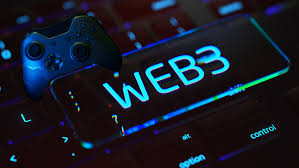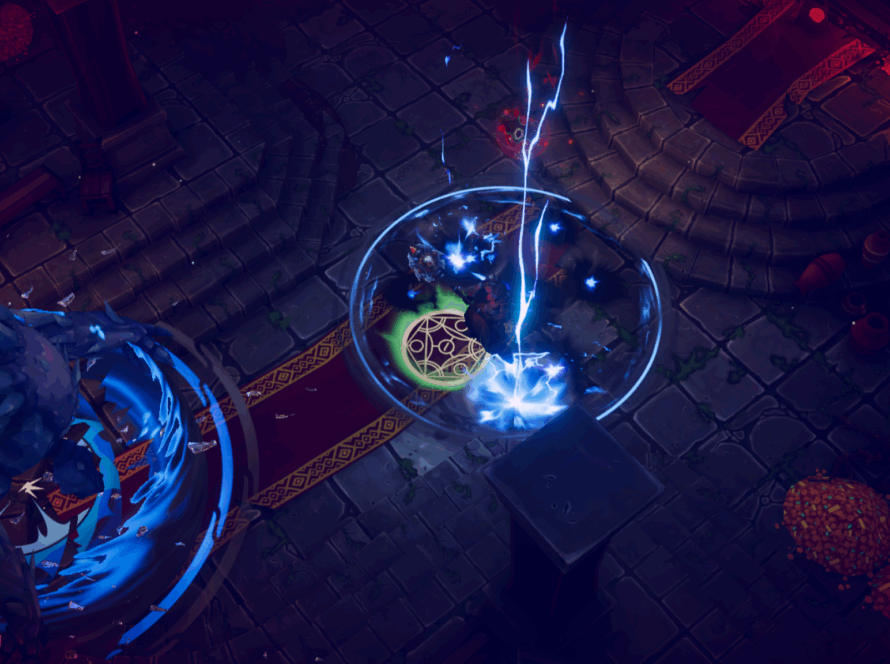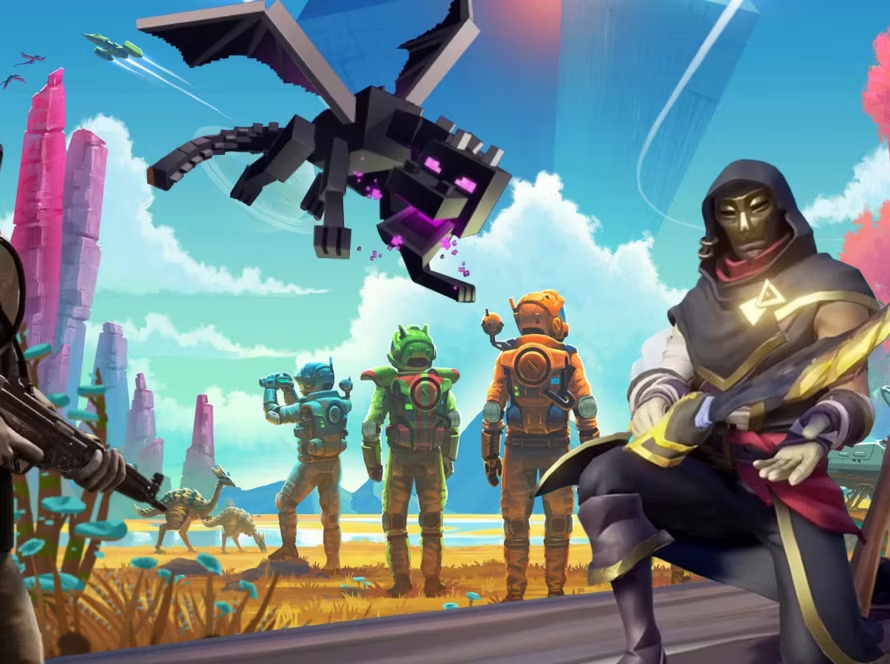Introduction
Gaming is entering a bold new era—an era defined by decentralization, ownership, and monetization. At the forefront of this evolution is Web3 gaming, a movement that blends blockchain technology, NFTs, and crypto rewards into the interactive experiences we know and love. As we step into 2025, Web3 games are changing how players interact with virtual worlds and empowering them with real ownership and income opportunities.
This blog explores the explosive growth of Web3 games, their benefits, challenges, top platforms, and why they’re here to stay. Whether you’re a gamer, investor, or developer, understanding the rise of blockchain-based gaming is essential web3 gaming trends.

What Are Web3 Games?
Web3 games, also known as blockchain games or crypto games, use decentralized technologies like blockchain, NFTs (Non-Fungible Tokens), and smart contracts to enable player-owned economies. Unlike traditional games, where the publisher owns all game assets and controls the economy, Web3 games give players complete control over their digital assets.
Key Elements of Web3 Games:
- True Ownership of in-game items via NFTs.
- Play-to-Earn (P2E) models where players earn real crypto rewards.
- Decentralized Governance through DAOs (Decentralized Autonomous Organizations).
- Interoperability—game items and currencies can be traded across platforms.
- Transparency & Security with blockchain-based ledgers.
Why Web3 Games Are Booming in 2025
The Web3 gaming revolution is built on the idea of player empowerment. No longer passive consumers, players are now investors, traders, and even stakeholders in the game’s success. Here’s why Web3 gaming is growing faster than ever:
1. Monetization Through Play
Web3 games offer real income opportunities through P2E models, allowing players to earn tokens, NFTs, or digital currencies with real-world value. Unlike traditional games, your time and skills have financial returns.
2. Digital Asset Ownership
Gamers no longer “rent” items—they own them. NFTs represent skins, weapons, characters, and other in-game assets that can be sold, traded, or used in other games.
3. Decentralized Economies
Game economies are not controlled by a single company but driven by player activity, community governance, and open-market principles.
4. Transparency and Security
Every action and asset exists on a public blockchain, ensuring fairness and reducing cheating or manipulation.
Play-to-Earn vs. Play-and-Earn: What’s the Difference?
As the space matures in 2025, a distinction has emerged between Play-to-Earn and Play-and-Earn games:
- Play-to-Earn (P2E) focuses primarily on profit—players grind for income.
- Play-and-Earn (P&E) emphasizes gameplay first, with earning as a bonus.
The shift to Play-and-Earn reflects the growing demand for high-quality, fun-first Web3 games that also offer rewards—not just passive mining simulators.
Top Web3 Games to Watch in 2025
Here are some of the most promising and popular blockchain games dominating the scene this year:
1. Illuvium (Ethereum/Immutable X)
A AAA-quality open-world RPG and auto-battler where players collect creatures known as Illuvials. Features real-time battles, land ownership, and token rewards.
2. Big Time (Ethereum)
A multiplayer RPG that combines time-traveling adventures with NFT loot and player-driven economies.
3. Star Atlas (Solana)
An ambitious space strategy game set in a galactic metaverse. Players build fleets, explore planets, and trade rare resources for profit.
4. Pixels (Ronin)
A cozy farming and social simulation game that rewards players with NFTs and crypto. It’s accessible, casual, and fast-growing among younger players.
5. Ember Sword (Polygon)
A browser-based MMORPG where players earn from combat, crafting, and land trading. It’s cross-platform and community-governed.
Web3 Gaming Platforms in 2025
1. The Sandbox
One of the most iconic metaverse games, where users can build, own, and monetize virtual experiences.
2. Decentraland
A user-governed 3D metaverse with NFT real estate, social events, and mini-games—all built on Ethereum.
3. Gala Games
A decentralized game publishing platform with multiple P2E titles like Town Star and Spider Tanks.
4. Immutable X
A Layer-2 Ethereum scaling solution optimized for NFT games. Popular with devs due to gas-free trading and high throughput.
5. Ronin Network
Originally developed for Axie Infinity, this blockchain is optimized for high-speed and low-fee gaming transactions.
Web3 Game Monetization Models
Web3 games introduce innovative revenue and reward models:
| Model | Description |
|---|---|
| Play-to-Earn | Earn crypto or NFTs by completing quests or battles. |
| Rent-to-Earn | Lend NFTs to other players in exchange for a share of profits. |
| Stake-to-Earn | Stake native tokens for rewards or voting rights in DAOs. |
| Create-to-Earn | Design skins, maps, or items and earn royalties on usage. |
These diverse systems mean players have more ways to generate passive income or active rewards based on their engagement.
SEO Keywords for Web3 Gaming Blogs
Use these keywords to maximize your blog’s visibility:
- Web3 games 2025
- Play-to-earn crypto games
- NFT gaming platforms
- blockchain-based games
- crypto gaming India
- Web3 metaverse games
- best blockchain games
- decentralized games 2025
- play-and-earn vs play-to-earn
- earn crypto playing games
Challenges Facing Web3 Games
While Web3 gaming is promising, there are hurdles that must be overcome:
1. Scalability
Blockchains like Ethereum still face congestion and high gas fees. Layer-2 solutions (e.g., Polygon, Immutable X) help, but mass adoption needs smoother experiences.
2. User Onboarding
New players unfamiliar with wallets, private keys, and crypto can find the onboarding process overwhelming.
3. Regulatory Uncertainty
NFTs, tokens, and P2E mechanics might fall under securities laws in some countries, raising compliance concerns.
4. Unsustainable Economies
Poorly balanced tokenomics can lead to inflation and “pump and dump” cycles that harm player trust.
5. Game Quality
Some early Web3 games lacked engaging gameplay, focusing only on earning. In 2025, quality is becoming a key metric.
How to Get Started with Web3 Gaming
If you’re new to Web3 games, here’s a simple guide to begin:
Step 1: Set Up a Crypto Wallet
Use MetaMask or Trust Wallet. Ensure you back up your seed phrase securely.
Step 2: Buy Crypto
Depending on the game, purchase Ethereum (ETH), MATIC, SOL, or native game tokens.
Step 3: Connect to a Web3 Game
Visit the official site and connect your wallet. Avoid suspicious links and always verify URLs.
Step 4: Start Playing & Earning
Play missions, collect NFTs, and explore the in-game economy. You can list your earned items on marketplaces like OpenSea or Magic Eden.
The Future of Web3 Games
By 2025, Web3 games are no longer fringe experiments—they are multi-billion-dollar ecosystems rivaling traditional gaming. With increased VC funding, better infrastructure, and cross-chain innovation, the space is set to explode.
Emerging trends include:
- AI-powered game generation
- Inter-metaverse avatars
- Real-world utility NFTs
- AR/VR integration in blockchain games
The future is not just about playing games—it’s about owning your digital identity, assets, and achievements across a growing, connected metaverse.
Conclusion: Web3 Games Are Here to Stay
Web3 games represent a paradigm shift in the way we play, earn, and interact online. They’re breaking down the walls of centralized control and replacing them with community, ownership, and opportunity.
In 2025, Web3 gaming is thriving. From immersive open worlds like Star Atlas to casual social games like Pixels, players are finally getting the recognition—and rewards—they deserve.
If you’re ready to dive into the next generation of gaming, now is the time. Set up your wallet, explore your favorite genres, and be part of the gaming revolution on the blockchain.1BitPlay.io
Want to explore Web3 gaming on platforms like 1BitPlay? Join now and discover crypto-powered fun with real rewards.1bitplay.io


